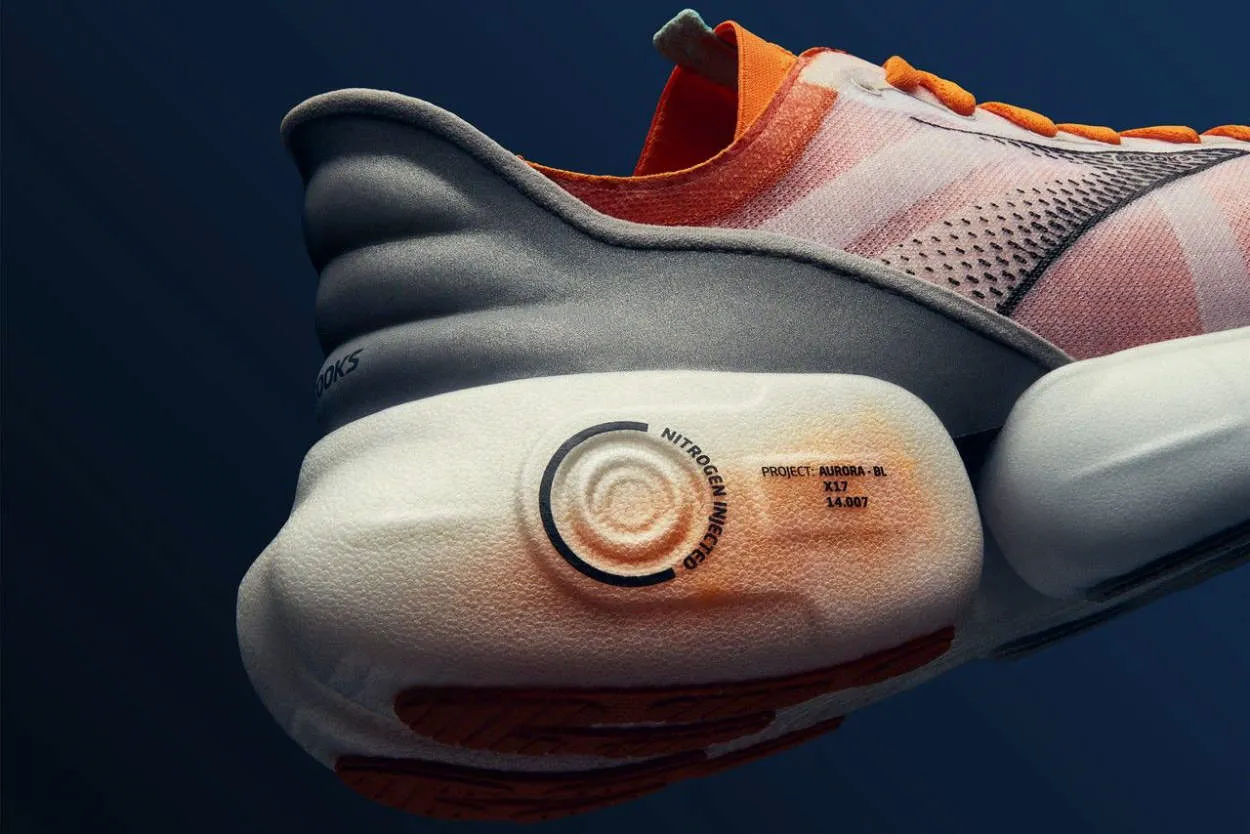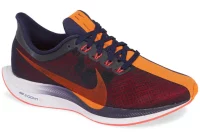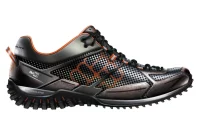Step into the world of sports footwear innovation and discover the cutting-edge technologies revolutionizing the way we play. From advanced cushioning systems to lightweight materials, this article delves into the exciting realm of athletic shoe design and highlights the brands and technologies pushing the boundaries of sportswear.
Latest Trends in Athletic Footwear
Athletic footwear has come a long way in terms of innovation and design. Manufacturers are constantly pushing the boundaries to create shoes that enhance performance and provide maximum comfort for athletes. Let’s explore some of the latest trends in athletic footwear:
1. Lightweight Materials
One prominent trend in athletic footwear is the use of lightweight materials. Manufacturers are utilizing advanced technologies to develop shoes that are lighter without compromising durability and support. These lightweight shoes can greatly improve agility and speed, giving athletes a competitive edge.
2. Cushioning Technology
Cushioning plays a crucial role in athletic footwear. To enhance comfort and reduce impact on joints, shoe brands are incorporating innovative cushioning technologies. From air-based systems to foam-based materials, these advancements help absorb shock and provide a more responsive and comfortable experience for athletes.
3. Customization Options
Personalization is becoming increasingly significant in the athletic footwear industry. Many brands now offer customization options, allowing individuals to choose colors, patterns, and even modify specific features to suit their preferences and needs. This trend not only adds a sense of uniqueness but also caters to the diverse requirements of athletes.
4. Sustainability Initiatives
As environmental consciousness grows, there is a rising trend towards sustainable athletic footwear. Brands are incorporating eco-friendly materials, such as recycled polyester and plant-based alternatives, in their manufacturing processes. Additionally, some companies are implementing recycling programs to reduce waste and promote a greener approach to production.
5. Smart Technology Integration
The integration of smart technology has revolutionized athletic footwear. Various sensors and trackers embedded in shoes can monitor metrics like distance, speed, and even analyze running techniques. This data can help athletes track their progress, identify areas for improvement, and optimize training routines.
These are just a few of the latest trends in athletic footwear. As technology advances further, we can expect even more innovations that will enhance performance, comfort, and sustainability in the world of sports footwear.
The Science Behind Shoe Design
When it comes to sports footwear innovation, there is a fascinating science behind the design of shoes that can enhance athletic performance and prevent injuries. The modern world of shoe design has evolved significantly over time, incorporating various technologies and materials to create the optimal athletic shoe.
Biomechanics and Shoe Functionality
Shoe designers take into account the biomechanics of different sports to determine the specific functionality required for each shoe. They consider factors such as impact absorption, stability, flexibility, and traction. By studying how the foot moves during specific activities, they can design shoes that provide the necessary support and enhance performance.
Materials and Cushioning
Innovative materials play a crucial role in shoe design. Manufacturers constantly research and develop new materials to improve cushioning, breathability, and durability. From foam midsoles with advanced cushioning technologies to lightweight and breathable uppers, each component is carefully selected and engineered to enhance comfort and performance.
Customization and Fit
To cater to individual needs, shoe designers explore customization options. They understand that every athlete is unique and requires a shoe that fits perfectly. With advancements in technology, it is now possible to create customized footwear based on factors like foot shape, gait analysis, and specific requirements for different sports.
Testing and Feedback Loop
Shoe manufacturers place great importance on testing their designs. Athletes provide valuable feedback during the development process, allowing designers to make adjustments and improvements. Through rigorous testing, both in the lab and on the field, shoe designers can ensure their products meet the demands of athletes across various sports.
The Future of Sports Footwear
The world of sports footwear innovation is continuously evolving. As technology advances, we can expect to see further advancements in areas such as energy return, smart technologies, and sustainable materials. These developments will continue to push the boundaries of what is possible in sports shoe design.
Customizing Shoes for Specific Sports
In the ever-evolving world of sports footwear innovation, customization plays a vital role in meeting the specific needs of athletes across different sports. Whether it’s running, basketball, tennis, or soccer, every sport requires specific performance features to optimize athletes’ performance and prevent injuries.
Customizing shoes involves tailoring the design, materials, and technologies to cater to the demands of each sport. For instance, in basketball, shoes need to provide excellent ankle support and cushioning to absorb the impact of jumps and sudden lateral movements. In contrast, running shoes prioritize lightweight construction, flexibility, and shock absorption to enhance speed and endurance.
Manufacturers utilize advanced technologies to offer customization options to athletes. Some brands provide online platforms where athletes can select various features such as shoe size, color, and personalized design elements. These custom shoes not only enhance performance but also reflect athletes’ individuality and style.
Customization goes beyond aesthetics; it extends to the functional aspects of sports footwear. Athletes with specific foot conditions or anatomical variations can benefit from personalized shoes that address their unique requirements. Custom orthotics, cushioning systems, and midsole technologies can be incorporated to provide enhanced stability, comfort, and support.
Furthermore, customization allows for continuous improvement and experimentation. Athletes and footwear designers can collaborate to test new materials, modifications, and technologies, pushing the boundaries of innovation. This collaborative approach helps in developing cutting-edge footwear that can revolutionize sports performance.
In conclusion, customizing shoes for specific sports is essential for athletes to reach their full potential. By tailoring design, materials, and technologies, athletes can experience improved performance, reduced risk of injuries, and enhanced comfort. It is an exciting era where customization and innovation converge, enabling athletes to conquer new challenges and break records.
The Environmental Impact of Sports Shoes
Sports shoes have become an essential part of our daily lives, particularly for athletes and sports enthusiasts. However, the production and use of these shoes also come with a significant environmental impact.
1. Raw Material Extraction
The production of sports shoes requires various raw materials, including rubber, leather, synthetic fabrics, and plastic. Extracting these materials often involves deforestation, chemical processes, and energy-intensive manufacturing.
2. High Carbon Footprint
The manufacturing process of sports shoes generates a high carbon footprint. This is primarily due to the energy-intensive production methods, transportation of materials, and the use of fossil fuels in factories.
3. Water Consumption
The production of sports shoes requires significant amounts of water, particularly in the tanning and dyeing processes. The release of chemically polluted water into water bodies after manufacturing further exacerbates the environmental impact.
4. Plastic Waste
Many sports shoes incorporate various synthetic materials, including plastic. The use of plastics contributes to the already alarming plastic waste problem globally, as they take centuries to decompose and often end up in landfills or oceans.
5. Limited Recycling Options
Despite efforts to promote recycling, sports shoes still face challenges in terms of materials separation and limited recycling options. The complex combination of materials used in their production makes it difficult to recycle them effectively.
6. Disposal Issues
When sports shoes reach the end of their life cycle, they are often discarded as regular waste. The improper disposal of these shoes further contributes to environmental pollution and landfill overcrowding.
Addressing the environmental impact of sports shoes requires innovation in sustainable material sourcing, cleaner manufacturing processes, improved recycling techniques, and promoting responsible consumer behavior. Only through collective efforts can we minimize the negative effects and move towards a more eco-conscious footwear industry.
Celebrity Endorsements in Sports Footwear
In the world of sports footwear, celebrity endorsements play a significant role in shaping consumer preferences and driving sales. Athletes from various sports, including basketball, soccer, tennis, and running, often collaborate with renowned sports footwear brands to create signature shoe lines. These partnerships not only benefit the athletes financially but also provide an avenue for brands to leverage the popularity and influence of these athletes.
One of the main reasons why celebrity endorsements are so effective is the aspirational element they bring. When consumers see their favorite athletes wearing a specific brand of sports footwear, they associate it with success, excellence, and peak performance. It creates a sense of desirability and motivates individuals to purchase these shoes with the hope of replicating the same level of performance on the field or court.
Celebrity endorsements also boost brand visibility and exposure. Through extensive marketing campaigns, featuring athletes in advertisements, social media promotion, and public appearances, sports footwear brands can reach a wider audience and generate buzz around their products. This increased visibility not only attracts new customers but also strengthens brand loyalty among existing ones.
Moreover, celebrity collaborations often lead to innovations in sports footwear. Athletes understand the demands of their respective sports better than anyone else, and their input in designing and developing shoes can result in performance-enhancing features and technologies. These advancements not only benefit athletes at the professional level but also trickle down to recreational and amateur athletes, improving their overall experience and performance.
In conclusion, celebrity endorsements in sports footwear continue to be a driving force in the industry. They provide brands with a unique opportunity to connect with consumers, elevate brand image, and drive sales. Athletes, on the other hand, benefit financially and contribute to the evolution of sports footwear through their collaborations. Overall, celebrity endorsements play a crucial role in shaping the world of sports footwear innovation.
Conclusion
Sports footwear innovation continues to push the boundaries of performance and comfort. From advancements in materials and cushioning technologies to customized fit and enhanced durability, athletes can now enjoy footwear that enhances their performance and protects against injuries. The world of sports footwear innovation is ever-evolving, fueled by the relentless pursuit of excellence in sports performance.




